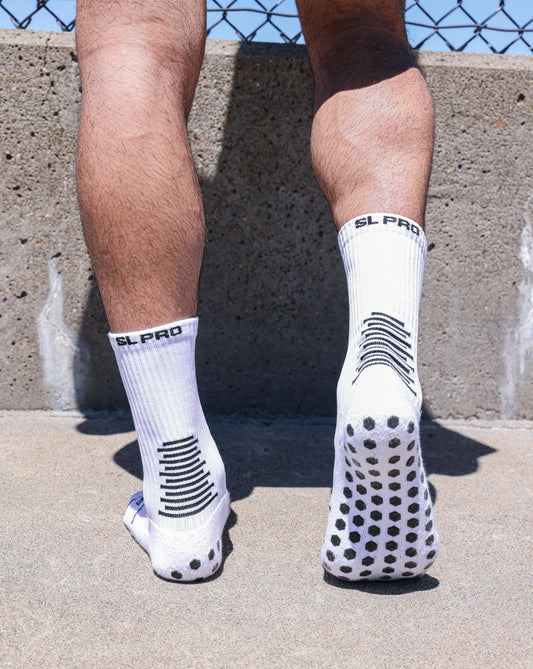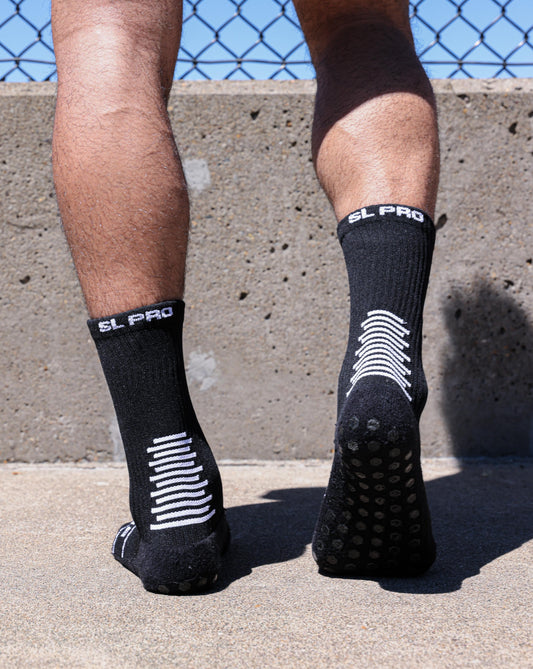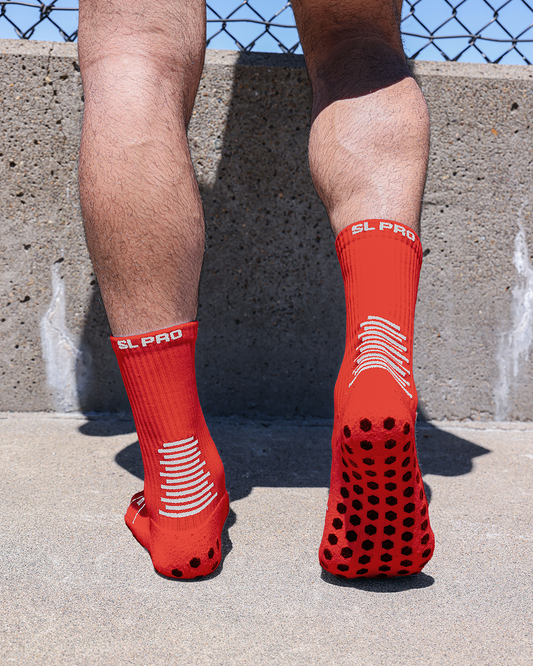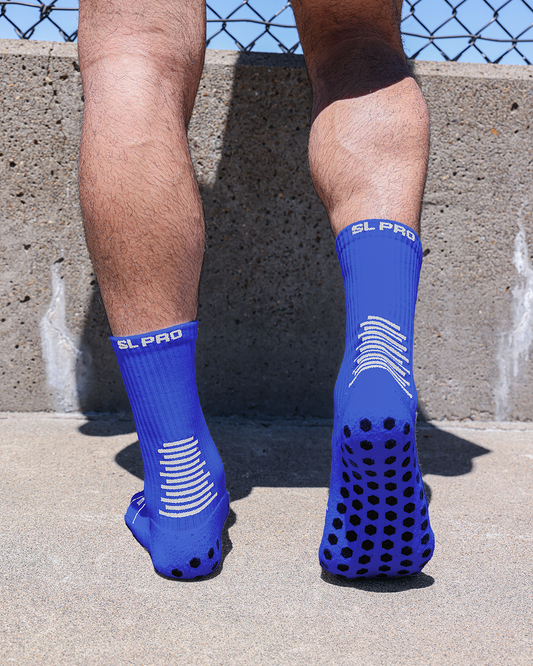Top 5 Mistakes People Make with Grip Socks (and How to Avoid Them)
If you’ve invested in grip socks, whether for soccer, running, Pilates, or just enhanced everyday comfort, you already know they’re not your average pair of socks. With built-in traction and performance-enhancing features, grip socks are designed to keep your feet stable, blister-free, and game-ready.
But here’s the thing: a lot of people don’t get the full benefit of grip socks simply because they make a few common (and totally avoidable) mistakes. Let’s talk about the top 5 most frequent errors we see, and how you can avoid them to make the most out of your grip socks.
1. Choosing the Wrong Size
The Mistake:
One of the most common issues athletes and casual users alike run into is sizing. Because grip socks often have compression-style fits and added rubber grip on the bottom, they don’t stretch or flex the same way as your regular cotton socks. As a result, many people end up buying socks that are either too tight (cutting off circulation) or too loose (leading to slippage, ironically the very thing you’re trying to avoid).
How to Avoid It:
Always check the brand’s size guide, especially if you’re ordering online. Unlike regular socks where “M” fits half the planet, grip socks sizing varies more significantly between brands. If you’re in between sizes, opt for the snugger fit, but not so tight that it feels restrictive.
Pro Tip:
Try them on with your cleats or shoes. A perfect fit barefoot doesn’t always translate to a great fit inside performance footwear.
2. Washing and Drying Them Like Regular Socks
The Mistake:
Throwing your grip socks into a hot wash or tumble dryer can quickly destroy the traction pads, weaken the fabric, and cause peeling or shrinking.
How to Avoid It:
Most grip socks are made from technical fabrics that require gentle care. Wash them inside-out on a cold cycle and air dry only. High heat will damage the silicone or rubber grips and degrade performance over time.
Bonus Tip:
Use a mesh laundry bag to prevent snagging on Velcro or zippers if you’re washing them with other athletic gear.
3. Wearing Them Too Long Without Washing
The Mistake:
Let’s face it, grip socks look clean for longer than regular socks. But their high-performance materials can trap bacteria and sweat more easily if not washed regularly. Some people wear them for multiple workouts without laundering, which can lead to odor, skin irritation, or even fungal issues.
How to Avoid It:
Treat your grip socks like you would workout clothes: wear once, then wash. No exceptions. Owning multiple pairs and rotating them throughout the week is a great way to make this habit sustainable.
Think of it like this: Would you wear the same shirt for multiple gym sessions without washing it? Didn’t think so.
4. Using the Wrong Type for the Wrong Activity
The Mistake:
Not all grip socks are created equal. A soccer player using socks meant for yoga is going to have a bad time. And wearing ultra-thick football-style grip socks in your tight runners might cause discomfort or even reduce circulation.
How to Avoid It:
Match the sock to the sport. Here’s a quick breakdown:
- Soccer/Rugby/Football: Opt for grip socks with ankle compression, arch support, and moisture-wicking fabric.
- Yoga/Pilates: Look for lightweight, breathable socks with full-sole grip and maybe even toe separation.
- Running/Training: Use thin, low-profile grip socks with reinforced heels and toes.
If the product description doesn’t clearly say what it’s designed for, it’s worth reaching out to the brand or checking customer reviews.
5. Not Replacing Them When They Wear Out
The Mistake:
Grip socks are built to last, but not forever. Over time, the traction pads wear down, the elastic loosens, and the sock loses the compression support it once offered. Continuing to use worn-out grip socks is like driving a sports car on bald tires, it just doesn’t make sense.
How to Avoid It:
Check your socks regularly for:
- Fading or peeling grips
- Loose elastic or sagging cuffs
- Holes or thinning in high-friction areas
Most grip socks used heavily (e.g., 3–5 times per week) last between 3 to 6 months before performance noticeably drops. If you notice less traction or comfort, it’s time to replace.
Smart Move:
Buy in bundles or multipacks and cycle them out regularly. Your feet, and your performance, will thank you.
Final Thoughts: Take Care of Your Grip Socks, and They’ll Take Care of You
Grip socks can be game-changers, literally. Whether you’re chasing a ball on the pitch, holding a balance pose in yoga, or cutting corners during sprints, they offer comfort, control, and injury prevention in one compact package. But like any performance gear, they work best when used right.
Avoiding these five common mistakes can extend the life of your socks, boost your performance, and keep your feet feeling fresh every step of the way.
Quick Recap: Top 5 Mistakes to Avoid
- Wrong size = wrong performance – Always check size charts.
- Hot wash = hot mess – Wash cold, air dry.
- Re-wearing = regrets – Wash after every use.
- Wrong type = wrong fit – Use activity-specific grip socks.
- Worn out = worn down – Replace when grip or fit starts to fail.





